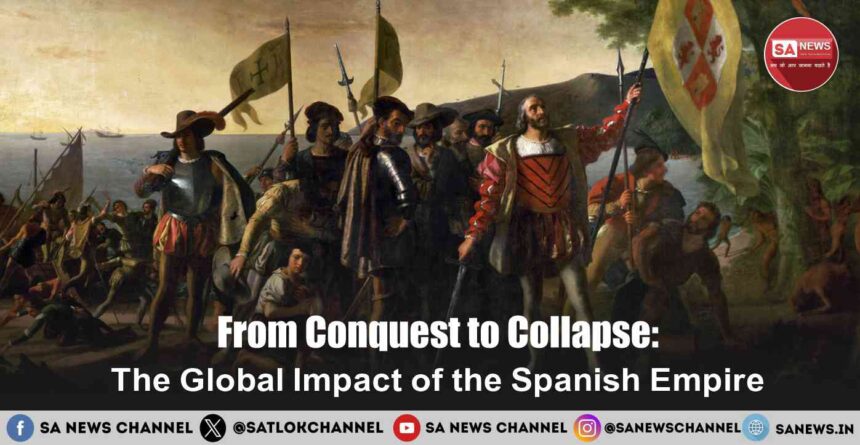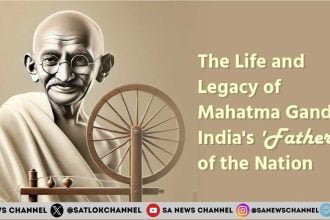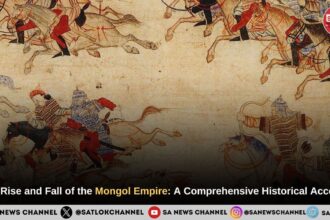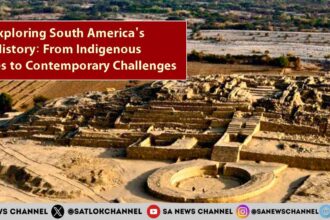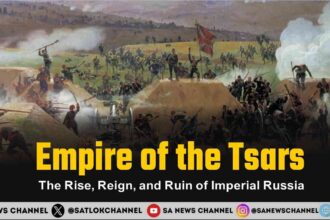The Spanish Empire was one of the largest and most influential empires in history. Stretching across Europe, the Americas, Africa, Asia, and Oceania, it marked the beginning of the modern globalized world. From its explosive rise in the late 15th century to its gradual decline in the 19th century, the empire not only altered the course of European politics but also shaped global trade, culture, religion, and colonialism. This article delves into the origins, expansion, golden age, challenges, and eventual disintegration of the Spanish Empire.
The Roots of Expansion: Catholic Unification and the Fall of Granada
The foundations of the Spanish Empire were laid with the union of two powerful kingdoms, Castile and Aragon through the marriage of Queen Isabella I and King Ferdinand II in 1469. This union created a centralized Spanish state, which culminated in the capture of Granada in 1492, the last Muslim stronghold on the Iberian Peninsula.
1492 was a transformative year. Alongside the completion of the Reconquista, Spain also sponsored the voyage of Christopher Columbus. His successful expedition opened the gates for Spanish expansion into the New World, signaling the dawn of a global empire.
Conquests in the Americas: Gold, God, and Glory
Spain’s entry into the Americas was swift and brutal. With military strength, religious zeal, and political ambition, Spanish conquistadors rapidly overran native empires.
The Aztec Empire fell to Hernán Cortés in 1521. Using alliances with local tribes, advanced weaponry, and tactics unfamiliar to the Aztecs, Cortés seized control of the vast empire of Tenochtitlán (modern-day Mexico City).
The Inca Empire succumbed to Francisco Pizarro in 1533. Despite being vastly outnumbered, Pizarro exploited internal divisions and captured the Inca ruler Atahualpa, effectively dismantling the imperial structure of Peru.
The wealth extracted from the Americas, particularly silver from the mines of Potosí and Zacatecas, became the backbone of Spain’s global dominance. Spanish territories soon spanned from Mexico and Central America to the Andes and beyond.
Administration and Colonization: Building a New World
The Spanish Crown established a vast bureaucratic system to govern its new territories. The Council of the Indies and viceroyalties like New Spain and Peru were created to implement royal authority in the Americas. Laws such as the New Laws of 1542 attempted (though often ineffectively) to curb the abuses of indigenous populations.
Also Read: Roman Empire History Revealed: From Mythical Beginnings to Lasting Impact
Spain brought Catholicism, European language, and institutions to the Americas, often at the expense of native cultures. Missions, churches, and schools were established, creating a unique blend of European and indigenous traditions that is still visible in Latin American culture today.
Spain’s Golden Age (16th–17th Centuries)
The 16th century marked the peak of Spain’s global power. Under Charles I (also known as Charles V, Holy Roman Emperor) and his son Philip II, Spain became the first empire on which “the sun never set.”
Spain controlled territories across Europe including the Netherlands, parts of Italy, and even temporary influence in England and stretched into Asia with the colonization of the Philippines in 1565.
Spanish galleons carried silver and goods across the Atlantic and Pacific, linking Europe, the Americas, and Asia in a web of commerce. The Manila Galleons became vital in trade between Spanish America and Asia.
This era also saw the flourishing of Spanish culture: literary giants like Miguel de Cervantes, artists like El Greco and Velázquez, and theologians who debated the morality of colonialism, like Bartolomé de las Casas.
Conflicts and Resistance: Cracks in the Empire
Despite its might, the Spanish Empire was far from invincible. By the late 16th century, it faced growing resistance and warfare.
The Dutch Revolt (1568–1648) challenged Spanish authority in the Netherlands, eventually resulting in the independence of the Dutch Republic.
The Spanish Armada’s defeat by England in 1588 marked a symbolic decline in naval supremacy.
The Thirty Years’ War drained Spanish finances and military strength.
Indigenous resistance in the Americas, including revolts like the Pueblo Rebellion of 1680, challenged colonial rule.
Moreover, the sheer size of the empire made centralized control difficult. Communication across oceans took months, and regional officials often acted independently of the Crown’s directives.
Economic Challenges and Overextension
Spain’s economic model was heavily reliant on American silver, which, while abundant, created inflation and dependency. Much of the wealth was used to fund wars in Europe or repay debts to foreign bankers. The empire struggled to develop a diversified economy.
Spain’s mercantilist policies also led to trade monopolies and inefficiencies. Instead of fostering local manufacturing, the colonies remained dependent on imports from Europe, creating structural weaknesses that persisted long after independence.
The Bourbon Reforms: Last Attempt at Revival
In the 18th century, the Bourbon dynasty initiated reforms to revitalize the Spanish Empire. These Bourbon Reforms aimed to modernize administration, increase revenue, and reassert Crown authority.
New viceroyalties, such as New Granada and Río de la Plata, were created. Trade restrictions were loosened, and military fortifications strengthened. Though these efforts brought temporary stability, they also intensified tensions between Spanish officials and Creole elites (American-born Spaniards).
The Collapse of the American Empire: Independence Movements
By the early 19th century, global events hastened the empire’s unraveling. Napoleon’s invasion of Spain in 1808 disrupted royal authority. Inspired by Enlightenment ideals and the American and French revolutions, independence movements erupted across Latin America.
- Simón Bolívar led campaigns in northern South America.
- José de San Martín liberated southern territories.
- Mexico declared independence in 1810 and achieved it by 1821.
- By the mid-1820s, most of Spain’s American colonies had gained independence, ending nearly three centuries of rule.
Spain’s Asian and African Remnants
Even after losing the bulk of its American empire, Spain held onto some overseas possessions.
In Asia, the Philippines remained under Spanish control until 1898, when it was ceded to the United States following the Spanish-American War.
In Africa, Spain maintained small enclaves like Ceuta and Melilla (which remain part of Spain today), as well as territories in the Western Sahara and Equatorial Guinea.
The Spanish-American War and the End of Empire
The final blow to Spain’s imperial power came with the Spanish-American War in 1898. After a brief but decisive conflict, Spain lost its last significant colonies like Cuba, Puerto Rico, Guam, and the Philippines to the United States.
This marked the official end of the Spanish Empire as a global colonial power. What remained was a humbled nation with a deeply altered identity.
Legacy of the Spanish Empire
Despite its decline, the Spanish Empire left a lasting legacy:
- Language: Spanish is now the second-most spoken native language in the world.
- Religion: Catholicism remains a dominant force in Latin America.
- Law and Culture: Spanish legal systems, architecture, literature, and customs continue to influence former colonies.
- The empire’s legacy is complex marked by cultural exchange, religious missions, and architectural grandeur, but also by slavery, exploitation, and indigenous destruction. Its duality remains central to understanding the modern histories of both Spain and Latin America.
The Enduring Echoes of a Forgotten Superpower
The Spanish Empire’s history is a compelling saga of ambition, conquest, innovation, and contradiction. It transformed the early modern world by linking distant continents through trade, politics, and religion. Spain did not merely build an empire; it reshaped global systems of governance, economy, culture, and belief.
Its legacy is deeply woven into the fabric of contemporary society. The language, faith, architecture, and even cuisine of vast parts of the world reflect the imprint of Spanish rule. Cities from Manila to Mexico City, and institutions from universities to cathedrals, still bear testimony to centuries of Spanish influence.
However, this influence came at great cost. The exploitation of native populations, forced conversions, and transatlantic slavery are part of the darker chapters of Spanish imperialism. These historical wounds have led to ongoing debates about colonialism, restitution, and cultural identity.
Understanding the Spanish Empire is not just about examining the past; it’s about recognizing how the imperial forces of one European kingdom continue to shape national identities and international relations to this day. Its fall reminds us that even the mightiest powers are impermanent but their legacies can echo for centuries.
Spiritual Perspective
The Spanish Empire was deeply rooted in Catholicism, which was not just a religion but a powerful tool for governance, cultural identity, and empire-building. Spanish rulers spread Catholicism throughout their colonies, pushing the conversion of indigenous populations across the Americas and beyond. Central rituals like Mass, communion, and veneration of saints became fundamental to daily life, influencing both personal conduct and state policies.
Over time, Catholicism in Spain has evolved, with some modern Spaniards becoming more secular, while others continue to follow deep devotion. Despite the changing religious landscape, the essence of spiritual devotion remains strong for many.
In this context, the teachings of the Chyren Sant Rampal Ji Maharaj offer a universal perspective on spirituality. He emphasizes that true understanding of God can only be achieved through the guidance of a Tatvdarshi Saint, who reveals the true path to salvation. Tatavdarshi Sant Rampal Ji Maharaj teaches that human life’s ultimate purpose is to seek God and live ethically. His philosophy transcends traditional beliefs, focusing on inner peace, love, and the necessity of God’s presence in everyday life to achieve eternal fulfillment.
Sant Rampal Ji Maharaj’s teachings challenge conventional religious practices by revealing the authentic method of worship. His message encourages the people of Spain, with their richn religious history, to find deeper meaning and recognize the true need for God in their lives.
Mensaje para el pueblo de España:
Queridos amigos, el camino hacia la paz eterna comienza con la búsqueda del verdadero Dios. Les invitamos a leer Gyan Ganga y seguir las enseñanzas de Sant Rampal Ji Maharaj para comprender el propósito real de la vida y la conexión con lo divino. ¡La verdad los liberará! También pueden ver sus discursos en inglés en el canal de YouTube de Satlok Ashram.
Translation in English: (Message for the people of Spain:
Dear friends, the path to eternal peace begins with the search for the true God. We invite you to read Gyan Ganga and follow the teachings of Sant Rampal Ji Maharaj to understand the true purpose of life and the connection with the divine. The truth will set you free! You can also watch His discourses in English on the Satlok Ashram YouTube channel.)
FAQs related to the Spanish Empire
1. Who founded the Spanish Empire?
The Spanish Empire began under the Catholic Monarchs, Queen Isabella I of Castile and King Ferdinand II of Aragon, in the late 15th century. They funded Christopher Columbus’s voyage in 1492, marking the start of Spanish overseas expansion.
2. Which territories were part of the Spanish Empire?
At its height, the empire included large parts of the Americas (Mexico, Peru, the Caribbean), the Philippines, parts of Europe (Naples, the Netherlands), North Africa, and Pacific islands, making it one of the largest empires in history.
3. Who were the most powerful rulers of the Spanish Empire?
Charles V and his son Philip II were the most influential monarchs. Charles ruled both the Spanish Empire and the Holy Roman Empire, while Philip led Spain during its Golden Age, including the defeat of the Ottomans at Lepanto in 1571.
4. Why did the Spanish Empire decline?
The empire declined due to economic troubles from over-reliance on silver, constant warfare, internal revolts, and the loss of key colonies like those in Latin America and the Philippines by the 19th century.
5. What is the legacy of the Spanish Empire today?
The Spanish language, Roman Catholic faith, and legal systems in many countries are direct legacies. Cities, culture, and identity in Latin America and parts of Asia still carry strong Spanish influences.


